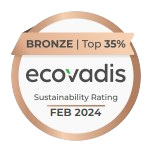Sustainable Cardboard Packaging in Belgium and the Netherlands: how to recognise them?
In a world where sustainability is increasingly important, choosing environmentally friendly packaging is essential. Cardboard packaging plays a crucial role in this. However, there are a wide variety of food cardboard packaging on the market, some of which are not always as recyclable & sustainable as initially thought.
1. Firstly, it is important that the cardboard itself is made of sustainable material, this can be recycled or virgin paper and cardboard on the one hand. The difference between these and the impact on your food product can be read in our blog Safety and Sustainability in Packaging: The Importance of Recycled Paper vs Virgin Paper.
2. Secondly, it is important that post-consumption paper and cardboard packaging can be recycled. To this end, we combine sorting and collection rules in Belgium and the Netherlands on the one hand and the operation of recycling systems for both countries and other countries in Europe on the other.
How can sustainable cardboard packaging for the food industry be recognized and how is its recyclability applied in practice, read on in this blog for more information.
1. Does the Paper and Board consist of Sustainable Material?
FSC/PEFC Certified Paper and Cardboard Packaging
Cardboard that is FSC/PEFC certified is cardboard that comes from sustainably managed forests. This certificate guarantees that forests are managed in a way that preserves biodiversity and respects the rights of local people. This certificate also ensures that for every tree felled, one is planted, which promotes circularity. By choosing FSC/PEFC-certified cardboard packaging, you contribute to protecting our forests for future generations. As a result, at Greenflex we always work with FSC/PEFC-certified cardboard.
In addition to paper made from sustainably managed trees, recycled paper and cardboard is also a sustainable material. FSC has provided a separate label for this, namely the FSC Recycled Label. A combination of both is labeled with an FSC Mix label:
FSC 100% label
An ‘FSC 100%’ label or claim indicates that the product comes entirely from FSC-certified forest(s).
FSC Mixed label
An ‘FSC Mix’ label or claim indicates that the product originates from a production process in which FSC material is mixed with recycled material and/or controlled material. Any product with an ‘FSC Mix’ claim represents at least 70% FSC-grade inputs.
FSC Recycled label
An ‘FSC recycled’ label or claim indicates that a product is made entirely from recycled material.

2. Is Paper and Cardboard Recyclable in Belgium and the Netherlands?
In general, Belgium and the Netherlands, like most of Europe, have a standard recycling process for paper and cardboard. A detailed map of the different recycling systems can be found further in this blog. The difference between Belgium and the Netherlands are the sorting and collection rules for cardboard waste, described below. Since December 2024, a common feature has been added, namely the fact that packaging that is fully compatible according to the 4Evergreen guidelines is also considered recyclable in both Belgium and the Netherlands. This was to be expected, as Europe wants to use the 4Evergreen guidelines as a standard in the future for fibre-based packaging.
Recyclability of Paper and Board in Belgium
The recyclability of paper and cardboard in Belgium was last updated on December 2024. According to these Design4Recyling guidelines, the following packaging can be recycled from paper and cardboard:
with at least 85% fibre content and at most one side covered with a liner (accessibility to water must be guaranteed for recycling) or found recyclable via the 4Evergreen protocol.
which are dry and clean.
Source: www.fostplus.be ; Design 4 Recycling guidelines
Recyclability of Paper and Cardboard in the Netherlands
According to the KIDV, consumers may dispose of single-sided laminated/coated paper and cardboard with the waste paper; producers and importers should demonstrate its recyclability.
According to 4Evergreen’s ‘Circularity By Design’, PaperSeal packaging falls under ‘Thermoplastic (= one side coated, inside the pack only)’. This packaging is therefore free of adhesives/glue and, based on testing, fully compatible with standard recycling processes. Our other packaging such as SlimFresh®, SliceFresh® and the Paper2Skin® are categorised at 4Evergreen, this well under ‘Lamination that is designed to be peeled easily by consumer’ and are therefore also fully compatible.

3. Which Paper and Cardboard Packaging is Recyclable in Europe?
The 4Evergreen guidelines, designed by the Confederation of European Paper Industries (CEPI), show the recyclability of cardboard packaging tests for several types of paper-based recycling systems within Europe. Based on these tests, they have designed guidelines and best practices for packaging design, use and recycling to ensure they are environmentally friendly and recyclable.

4Evergreen has mapped paper and cardboard recycling plants in Europe. Specifically, there are 410 recycling plants in Europe specifically for processing paper-based packaging. For example, Belgium has 2 recycling plants for paper and cardboard while the Netherlands has 14. Additionally, both Belgium and the Netherlands also have specialised recycling plants, these plants treat composite fibre-based packaging such as beverage cartons and other materials with improved barrier properties. The recycling plants have the capacity to separate fibres from other materials to enable recycling of all components.
4Evergreen compatible packaging is therefore paper and cardboard packaging that can be reused after recycling in a standard fibre-based recycling system, as indicated above.
PaperSeal® Trays: Innovation in Recyclable Packaging
PaperSeal® trays are an excellent example of sustainable cardboard packaging. If the consumer separates the liner and the cardboard, the packaging is 100% recyclable, as no cardboard fibres are attached to the liner by thermoforming. And even if the consumer does not separate it, during the recycling process the plastic is separated from the cardboard, in line with 4Evergreen guidelines. This ensures that both materials can still be properly recycled without extra effort from the consumer.
A test we did showed that 85% of the packaging was found to be recyclable when entering the cardboard stream with liner. Since our food packaging consists of 85% (or more) cardboard, the entire cardboard fraction is therefore recycled during the recycling process. This test is based on a standard paper-based recycling system.
Advantages of Sustainable Cardboard Packaging
- Environmental friendliness: Choosing cardboard packaging reduces the carbon footprint of your product.
- Ease of use: Separating materials is easy for consumers, which promotes recycling.
- Certification and Accountability: Our packaging is FSC/PEFC-certified, which ensures responsible sourcing of the material.
Conclusion: 4Evergreen Compatible & FSC/PEFC Certified Cadboard Packaging is the Future
Sustainable cardboard packaging is the future of eco-friendly packaging. By choosing cardboard packaging that is both 4Evergreen compatible and FSC/PEFC certified, you are choosing sustainable packaging and contributing to a cleaner and more sustainable world. Our paper packaging, with its FSC/PEFC certification and recyclability, offers an excellent solution for businesses and consumers who want to be environmentally conscious. PaperSeal® trays perfectly illustrate how innovation can lead to better and greener packaging solutions.
Choose our paperboard packaging today and make a positive impact on the environment!







